
Most of the local men who served in France and Belgium in World War 1 were in the 103rd Regiment of the Yankee Division and fought in the critical 1918 battles of Chateau Thierry, Xivray and the Marne. The troops arrived home in 1919 at the Port of New York. On the ship, among dozens of other local soldiers, was Joe Murphy of Calais who wrote an account of the battles his regiment fought for the Portland Telegraph Journal in February 1919. In the article Murphy mentions, among others, Richard McGarrigle and Frank Lowther of Calais, Sergeants George Potter and Sam Browne of Eastport – “Two of the bravest men I saw over there” – and Richard Preston of Dennysville, who held his foot on a German bomb that had landed in their trench, saving the lives of several men at the cost of his leg.
He also writes of the bravery of Albert Mercier of Princeton and brothers Fred and Harry Sherman of Calais who were not on the ship because they were buried, along with Joseph Polis of Pleasant Point and others in one of the many American military graveyards in Europe. It was several years before the bodies of the Sherman brothers were returned to Calais for burial in the Calais cemetery.
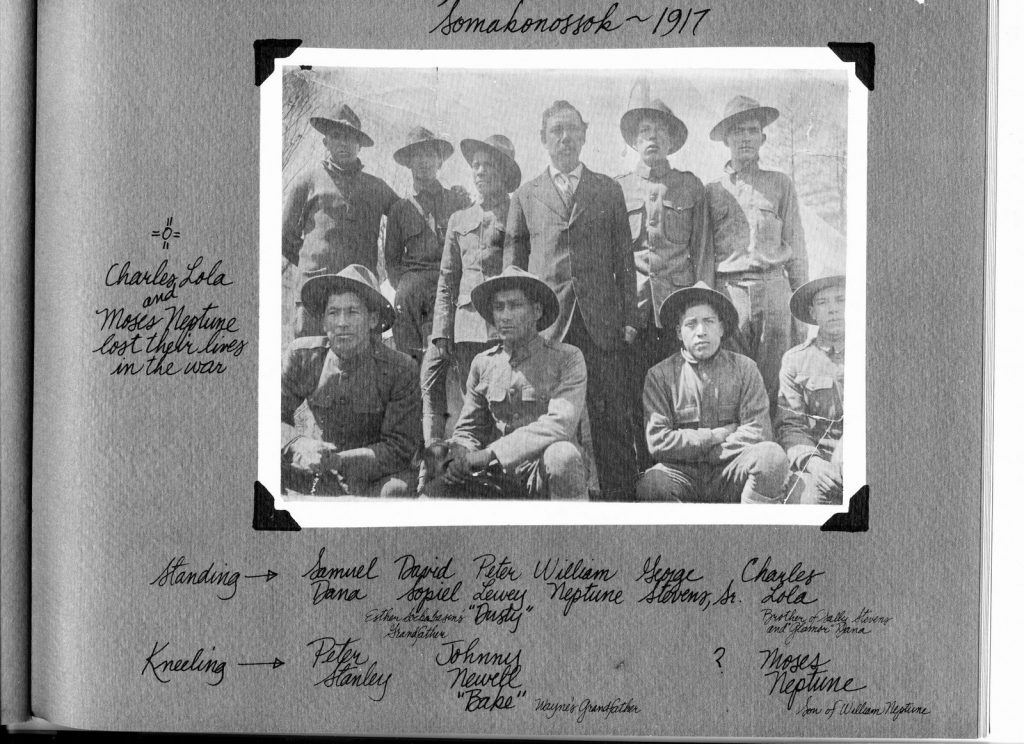
The list of those killed in action was long for Washington County, but on this side of the border the per capita losses of the Passamaquoddy Tribe were the greatest. One of the boys killed was the son of the Tribal Governor William Neptune. According to the Meriden Connecticut Journal of May 15, 1919, the Passamaquoddy Tribe sent 29 soldiers to the war and nine died in the conflict. It should be noted that none of these young men or the Governor for that matter had the right to vote but all were subject to the draft.
A history of the 103rd Regiment says the 103rd:
“was the only New England organization with full blooded Indians in its ranks – a squad of men from the Passamaquoddy Tribe of Pleasant Point Village in Maine, every one of whom proved to be a true warrior either killed or wounded in action.”
Our Canadian cousins across the St. Croix suffered even more grievous losses – 87 men died and over a hundred were wounded during the war. A memorial service was held for these men in St. Stephen on February 16, 1919.
After the horrors of the Great War, one would have hoped the world would have been able to enjoy at least a brief period of peace and tranquility. This was not to be. Fear of the Bolsheviks and Communist ideology, German unhappiness over the Versailles Treaty, the breakup of the Ottoman Empire and the victors’ unseemly battle over the spoils of war all contributed to conflicts. Turkey’s declaration of independence led to civil war, Afghanistan declared war on Britain and the United States invaded both Costa Rica and Honduras to protect U.S. business interests and the U.S. Army finally captured Pancho Villa, the Mexican revolutionary. All of Europe was in turmoil with many governments brutally suppressing Communist and Socialist movements while in Russia the Whites and Bolsheviks were engaged in bloody civil war in which the Western power intervened, unsuccessfully, on behalf of the Whites by landing troops in Siberia. National newspapers reported in February 1919 that a soldier named Jos. Hackett of Calais, Maine was accidently killed on February 9, 1919, while serving with these “Siberian Forces”. Thanks to the research of Sharon Howland, who somehow obtained Hackett’s complete military record we discovered his death actually occurred in Syria where he was serving with a Canadian Expeditionary Force. Hackett’s sister was Mrs. Randolph Day of 19 River Road, Calais but we find no other connection with Calais.
As we noted nearly everyone hated the Versailles treaty, the U.S. Senate voted against it by a narrow margin and voted down the League of Nations by a wide margin, but Britain and France imposed its terms on the Germans which in turn led to revolts, massacres, the formation of Hitler’s Nazi party and Mussolini Fascist League in Italy in 1919. These events inevitably led to the Second World War.
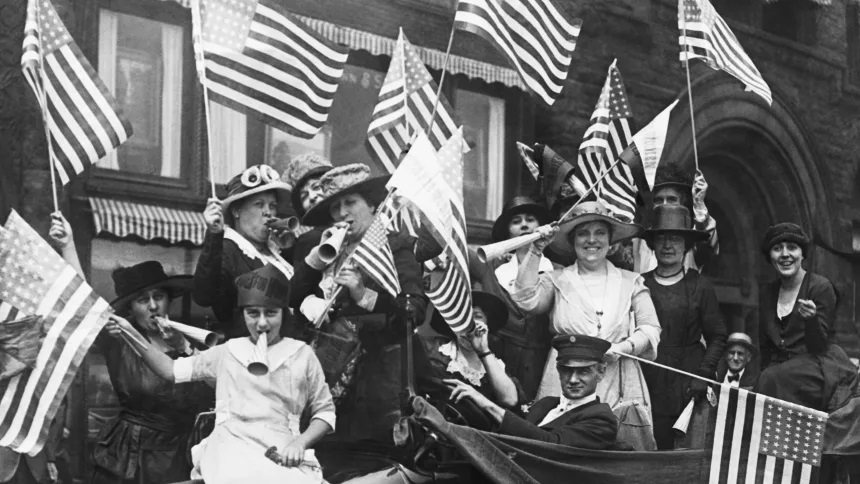
In this country, the Congress enacted Prohibition and Women’s Suffrage, the latter to its great credit while the former was a social and political disaster and is generally regarded as the mother of all ill-conceived legislation. In sports Dempsey KO’d Willard to win the heavyweight championship and the Red Sox traded Babe Ruth to the Yankees. The Babe set a new home run record in 1919. On the quirky side, pitcher Ray Chapman was flattened on the mound by a bolt of lightning on August 24th but recovered to no hit the Yankees on September 10th. In Boston a storage vat of molasses 50 feet tall and 90 feet wide collapsed on Commercial Street in Boston sending a wave of 2,300,000 gallons of molasses 25 feet high down the street at 35 miles per hour. 21 people were killed.
In the St Croix Valley in 1919 the Calais Woman’s Club was formed but the club was very ambivalent, perhaps even hostile, to their newly established right to vote. Notes of a club meeting stated, “We may not be wholly in sympathy with Woman Suffrage but it is granted to us and we are expected to vote at the next Presidential election.” Hardly a ringing endorsement of the franchise but Calais was politically very conservative in 1919 and skeptical of any change which might upset the social or political order. For instance, a production coming to the Calais Opera House titled “Oh You Women” dealt with the then tricky issue of men returning from the war to find their jobs taken by women. The Calais Advertiser’s comment on the production made its position clear:
It may have been fine for the women of the country to take the positions held by the men who served in the Great War and helped make the world safe to live in, but it is all wrong for them to keep these positions when their heroes come back home.
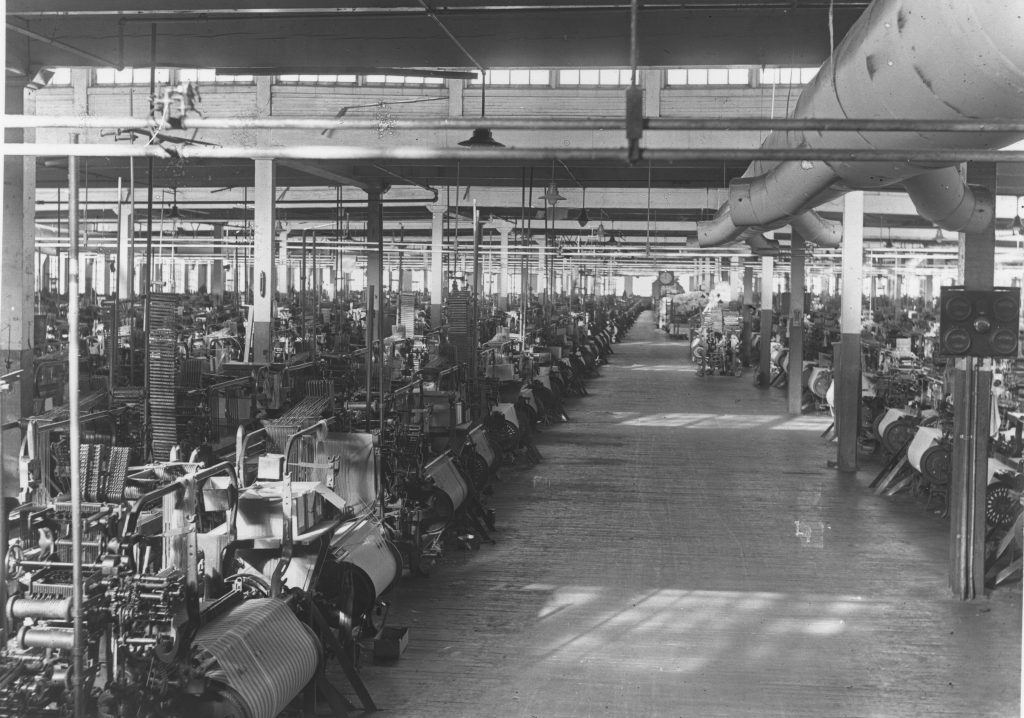
In other Calais/St. Stephen news of 1919 the loom fixers at the Cotton Mill in Milltown NB went on strike demanding a raise of seven and a half cents to 50 cents an hour. This put over 500 people out of work, including many from Calais and Milltown Maine. Successful strikes were rare in those days. Lumber barons consistently broke strikes with scabs, threats and simply refusing to negotiate. Workers sometimes grudgingly returned to work for less pay but in the loom fixers case the strike was successful, and the Cotton Mill soon reopened. The Calais Advertiser was probably outraged at the result as the paper was very much opposed to labor unions and strikers in 1919, particularly the IWW (International Workers of the World), which was involved in the infamous clash with members of the American Legion in Centralia Washington in 1919. Several legionnaires were killed after they allegedly attacked the IWW Union headquarters or, in the Legion’s version, were attacked without provocation while marching by the headquarters. The Advertiser described the members of the IWW as “forces of medieval savagery and barbarism” “assassins” and “revolutionaries plotting to overthrow the government of the United States.” Even Sam Gompers, respected founder of the American Federation of Labor (AFL) and a man denounced by the IWW as a tool of the capitalists, was in turn denounced by the Calais Advertiser in 1919 which warned local folks of the suffering the AFL’s “revolutionary tactics would precipitate.”
In Fredericton, the provincial divorce court had its largest docket in its history due to the disruption in families during the war. One soldier found his wife had “eloped during his absence across the international border at Calais”, another claimed his brother had run off with his wife and a third had remarried without the formality of divorcing him. She was charged with bigamy.
The Boston Globe reported that the Calais merchants were concerned about “the high rate of exchange on Canadian currency” which had been raised “from three cents to four and a quarter cents on a dollar” and, as many Calais residents worked at the Cotton Mill and their pay was in Canadian money, they expected Calais merchants to take Canadian money at par. Calais merchants today no longer complain about the exchange rate.
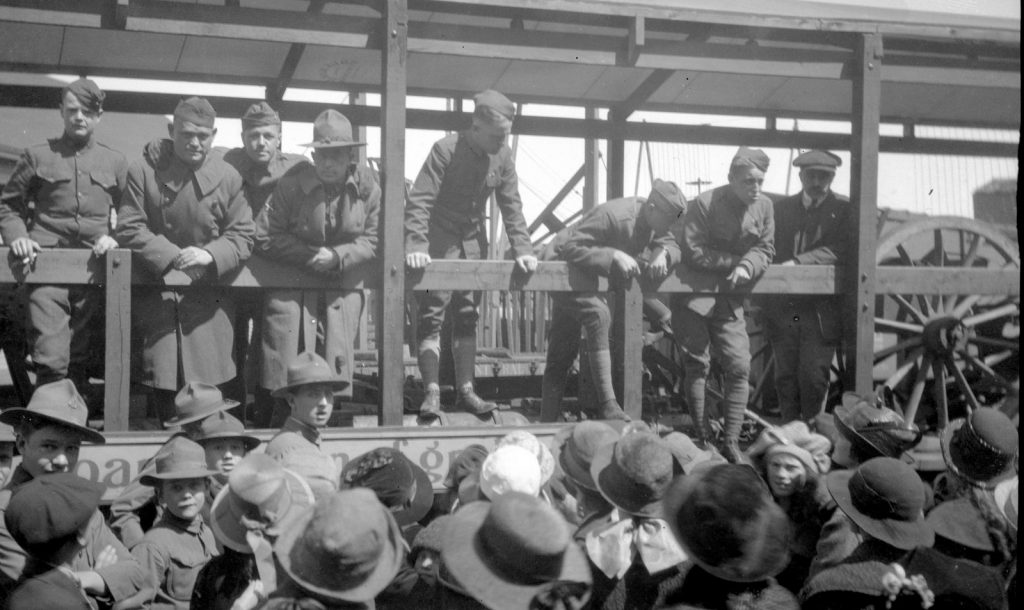
The Boston Herald reported an amusing incident concerning a Pvt Smith from Calais who may well be one of the fellows pictured above at the Calais train station on Hog Alley in 1919. The 103rd Regiment was given a reception in Boston on its way home from New York and, according to the Boston Herald, private Smith approached General Edwards, a big bug of some sort, to shake his hand. Smith is described in the article as having a “portly build”. After shaking Smith’s hand, the General inquired of Smith “How did such a weather strip as you miss so many bullets?” “I didn’t miss many of them,” Smith replied, “I got hit five times.”
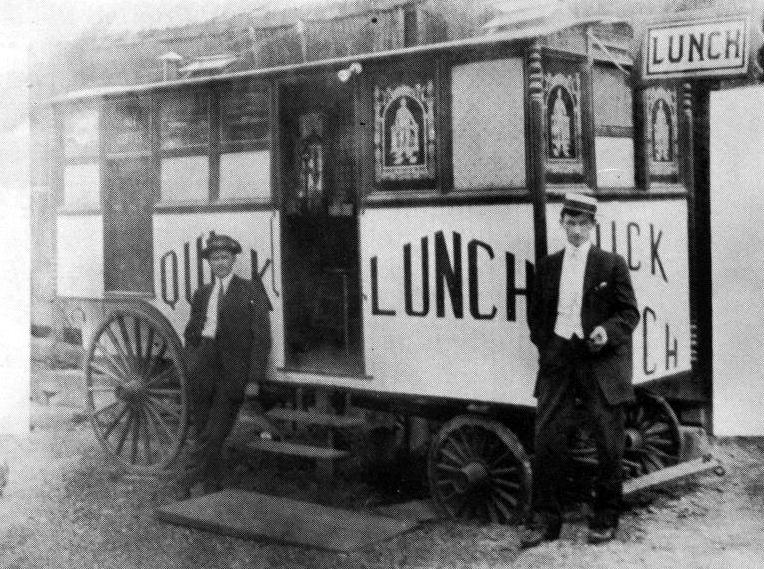
Down Eastport way the WACO diner served its first meal while still a lunch wagon and the fellows who operated the sealing machines at the sardine factories went on strike shutting down the canneries. They were demanding 40 cents an hour, 10 cents less than the loom fixers in Milltown. We don’t know whether they got the raise but we do know from another article that the Eastport canneries shut down early in 1919 and according to the Boston Globe, Eastport folks turned to clamming. The Globe reported:
Whole families are often at work in favorable weather. From $3 to $5 a day has been earned in past seasons by expert diggers when two tides a day can be worked. The long necks of the shelled clams are clipped off with shears and the “meat” packed in tin cans with juice, the cans sealed and cooked.”
The three masted schooner Nettie Shipman, captained by Beryn Bradford of Eastport had a harrowing experience. Approaching Cuba with 267,000 feet of lumber a tornado snapped the ship’s masts, dislodged its cargo, and forced the captain and crew to take to the lifeboats. After four days at sea, they sighted Wallings Island off the coast of San Salvador and attempted to land but were attacked by natives with shovels and clubs who feared they were Germans. An uneasy truce was concluded and for 22 days the sailors lived off fruit and sugar cane before being rescued by a ship from the West Indies.
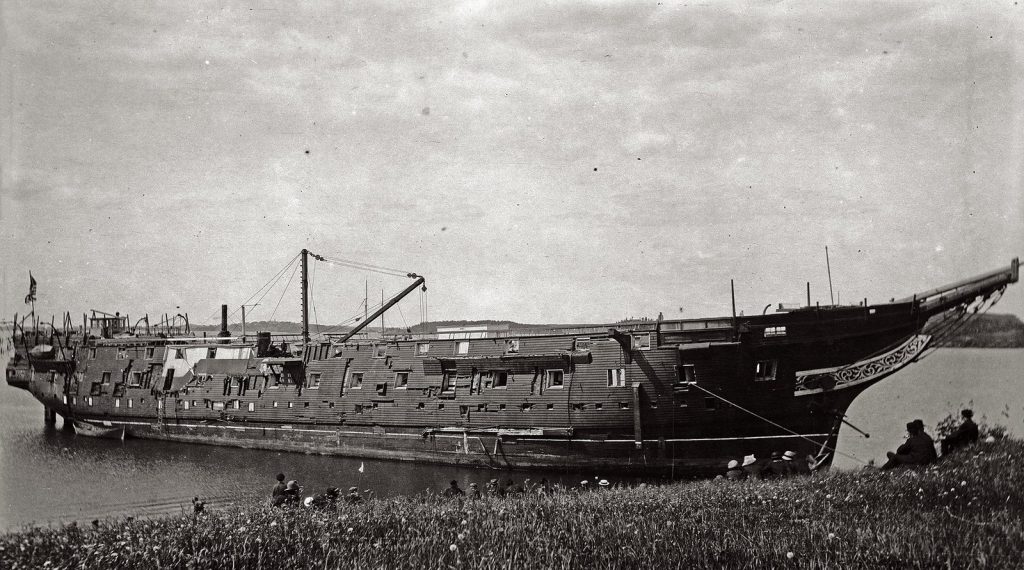
Coney Beach, now known as Broad Cove, in Eastport was known as the crematory of famous old ships. In November 1919 the frigate Richmond arrived to be torched.
According to the Blackwell Oklahoma Tribune of November 12, 1919:
The torch has been applied here to frigates Minnesota, Wabash and Vermont, and now comes the wooden frigate Richmond.
Like the others, the Richmond was towed up Eastport harbor and beached at the high running tides which reached 22 to 24 feet twice a day. The famous old Warcraft will be put to the torch. The valuable copper and other metals will be gathered by junk dealers who have purchased her. The old relic of the civil war should make a spectacular blaze when the torch is applied. Several thousand spectators will gather along the shores to watch the doom of the ship.
The Coney beach has been found an excellent spot for wrecking these old warships, such a drop in the tides affording the workmen plenty of time to gather the metals.
In August 1919 customs officials in Eastport arrested the driver of a car on its way to Bangor in which were eight Chinese illegal immigrants and nine pounds of opium. The officers said the Chinese were brought from St. John NB in a boat and landed in an Eastport cove.
In a preview of what was to become more common on the nation’s highways two young men from Eastport were, it was claimed, racing their autos and collided with a motorcycle killing 17-year-old Frank Lewis of Eastport. After a day of testimony before the Superior Court in a civil suit for $5000 damages by the boy’s estate, the judge took the parties into chambers and apparently mediated a settlement.
Mrs. Alice Eaton of Princeton sued the government to collect on the $10000 insurance policy provided to all service members after her son died at Fort Devens in 1919. The government’s defense was that “he was not in perfect health at the time he was insured.” It does seem the government should have checked his health before putting him through the rigors of military training. The Bangor Daily news called the suit “A case without precedent’. We do hope the government settled with Mrs. Eaton, especially as the New York Herald reported in February of 1919 that the first man in the United States to be drafted during World War One and report to a military base for training was from Princeton Maine.
Werner Horne, the German officer who attempted to dynamite the bridge in Vanceboro in 1915 was transferred from American custody to the Canadian authorities who tried him in Fredericton. Found guilty of the offense he was sentenced to 10 years in the penitentiary at Dorchester NB but did not serve the entire sentence. Later judged insane, he was repatriated to Germany.
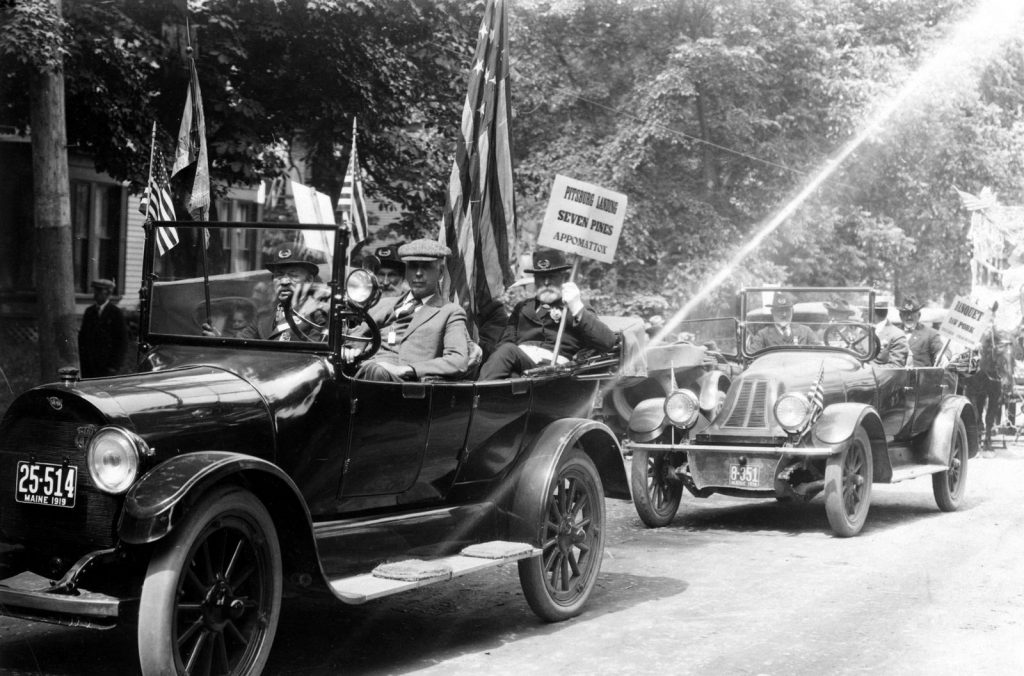
We’ll end with this wonderful photograph taken during the Calais 4th of July celebrations in 1919. Grand Army of the Republic veterans were prominent in all patriotic celebrations, for many years walking in parades in full dress uniform. By 1919 most were deservedly chauffeured in the nicest cars the town could offer. The gent in the first car fought at the battles of Pittsburgh Heights, Seven Pines and Appomattox. We wonder if there were any veterans still living in 1919 from the Battle of Marye’s Heights where Calais lost Captain Haycock, Frank Holmes and had so many others killed and wounded.
